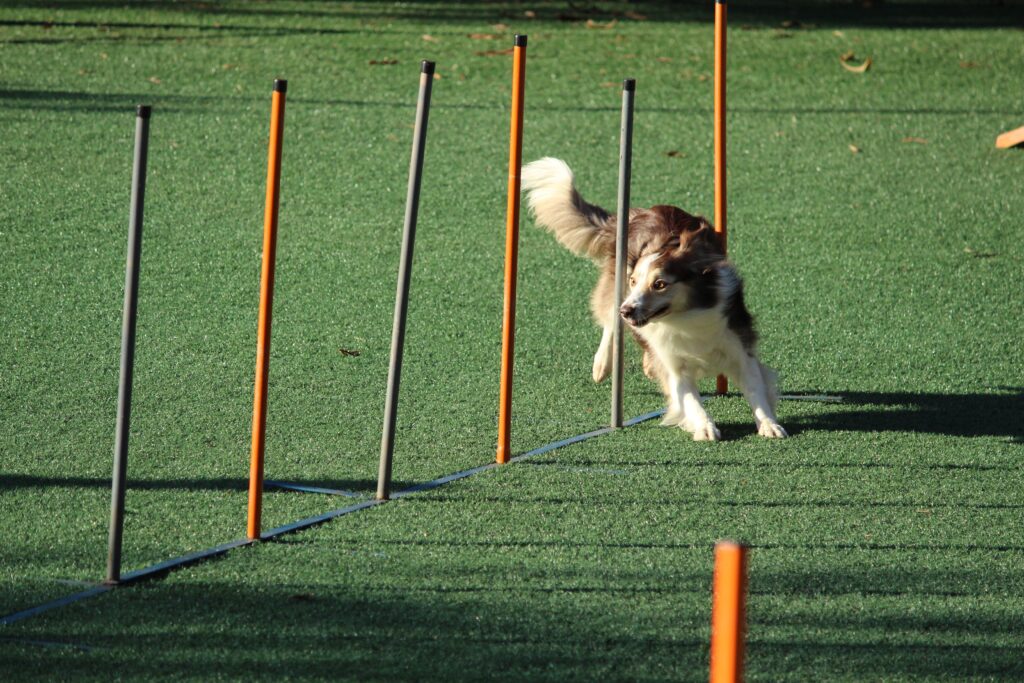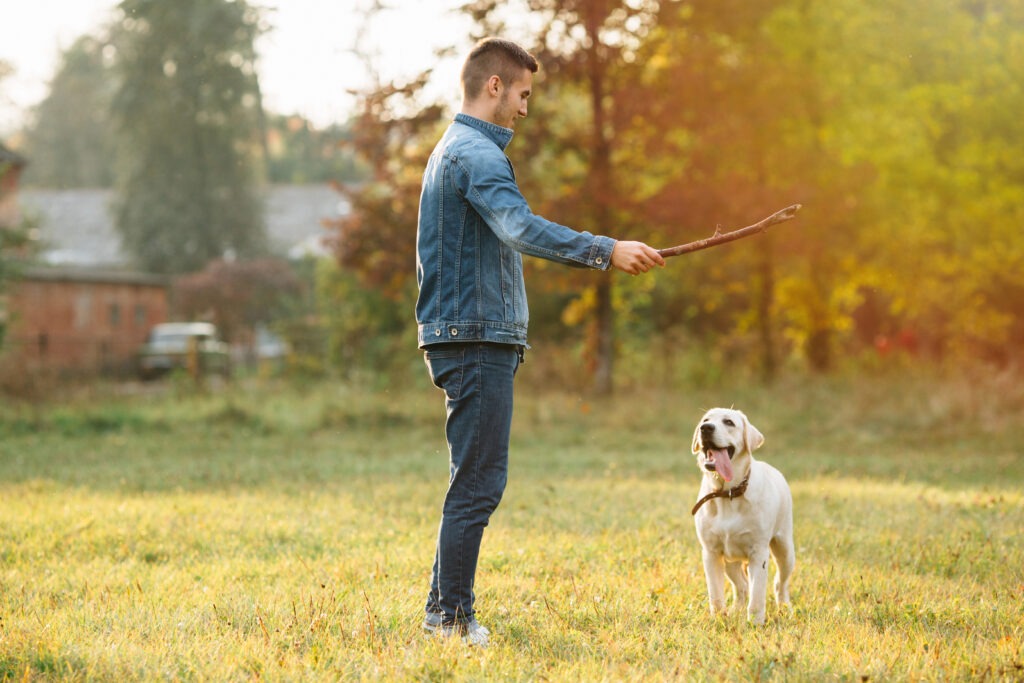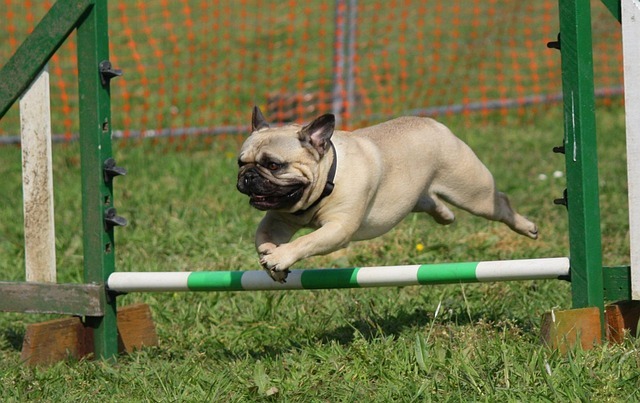Discover the ultimate guide to Labrador training which help you a lot, many new owners find it difficult. So, are you ready to take your pet to the next level?
Labrador Training Tips
Labrador Retrievers are famous for their friendly and outgoing nature, which makes them great companions for families and individuals alike. They are also highly intelligent dogs, which makes them easy to train for various tasks such as hunting, search, and rescue work. However, before starting training process for your Labrador, it is important to take the time to understand its unique personality. Understanding your Labrador’s temperament and behavior can help you tailor your training approach to best suit its needs and ensure a successful outcome.

By following these 7 important labrador training tips, you can find the best companion in your dog.
1- Basic Tips for Labrador Training
Developing a strong bond with your dogs is crucial for their training and overall well-being. When you establish a connection based on trust and mutual respect, it becomes much easier to teach them fundamental commands like sit, stay, and come. However, it’s equally important to train them in basic manners, such as waiting for their food and avoiding jumping over people.
One effective way to train your dog is through reward-based training, which involves giving your dog a treat or praise when they exhibit good behavior. This positive reinforcement encourages your dog to repeat the desired behavior, making the training process more enjoyable for both you and your furry companion.
Another essential aspect of dog training is teaching them how to walk alongside you without pulling on the leash. This can be achieved by using a no-pull harness or head collar and gradually increasing the distance of your walks. With consistent training and positive reinforcement, you can turn your daily walks into a fun and stress-free experience for you and your dog.
2- Socialization
Labradors are social creatures and it is important to socialize them from a young age. Socializing your Labrador means exposing them to different people, animals, and environments, which helps them develop important social skills. By interacting with new people and animals, they learn to manage their fears, anxieties, and aggression, becoming more confident and well-rounded companions.
Socialization provides an opportunity for your Labrador to explore the world and learn how to behave in different situations. It teaches them how to communicate and interact with humans and other animals in a positive way. Socialization also helps prevent behavioral problems such as separation anxiety, aggression, and fearfulness, which can lead to destructive behavior.
By regularly exposing your Labrador to new experiences, you can help them become more confident and adaptable, making them better companions and more enjoyable to be around. It is important to start socializing your Labrador from a young age and to continue throughout their life to ensure they remain well-adjusted and happy.
3- Advanced Labrador Training

Labrador Retrievers are a breed of dogs that are renowned for their exceptional retrieving abilities. These dogs possess a strong innate desire to fetch objects, which makes them ideal candidates for specialized training programs. With proper training, these dogs can learn advanced commands such as lying down, rolling over, and shake hands. These skills not only make them obedient but also highly intelligent pets. Labrador Retrievers are also popular for their friendly, loyal, and playful temperament, which makes them great companions for families and individuals alike.
4- Behavioral Training
Labradors are widely recognized for their intelligence and trainability. They are known to learn quickly and be highly adaptable to new situations. However, like any breed, Labradors may exhibit unwanted behaviors such as chewing, digging, or excessive barking, especially if they are not given enough physical and mental stimulation. To correct these behaviors, it is essential to provide them with proper training and exercise.
For example, providing them with toys to chew on or taking them for regular walks can help alleviate chewing and digging tendencies. Additionally, ensuring that they receive enough attention and interaction from their owners can help reduce excessive barking. It is important to maintain both the behavior and physical appearance of Labradors to ensure their well-being and quality of life. Regular veterinary check-ups, grooming, and exercise are all vital components of keeping a healthy and happy Labrador.
5- Positive Reinforcement
When it comes to training your Labrador, it is important to maintain a positive and supportive approach. This means rewarding them for their good behavior and being calm and consistent during the training period. Labrador Retrievers are intelligent and eager to please, so it’s important to offer them plenty of praise and encouragement when they follow your guidelines.
By doing so, you can establish a strong bond of trust and respect with your dog, which will make the training process more effective and enjoyable for both of you. Remember that training is a gradual process, so be patient and stay committed to your goals. With time and effort, your Labrador will become a well-behaved and loyal companion.
6- Tools for Labrador Training
Various training tools use to aid the training process of your pet. Clickers, for instance, are effective in marking a specific behavior that you want your pet to repeat, as they produce a distinctive sound that signals to your pet that they have done something right. Treat pouches are also beneficial, as they allow you to easily dispense treats to reward good behavior during training sessions.
Training collars, on the other hand, can help reinforce commands and ensure that your pet is safe and under control while training. Additionally, toys that are specifically designed for training purposes can provide mental stimulation and encourage positive behavior during training sessions.
7- Training Throughout Life
Training a Labrador can be a rewarding experience for both the dog and the owner. However, it is important to keep in mind that training is an ongoing process that requires patience and affection. As your Labrador grows, their needs change, and so do the training methods. Therefore, it is essential to modify your training techniques depending on your dog’s age and developmental stage.
Consistency is key in Labrador training. It is crucial to establish clear rules and boundaries and stick to them at all times. This helps your dog understand what is expected of them and helps them learn faster. Labrador’s training requires time and patience, so ready to invest both. It is vital to give your dog plenty of time to learn and avoid rushing the training process.
Despite their training, it is also important to understand your Labrador’s personality, behavior, and temperaments. Labradors are popular for being friendly, loyal, and intelligent dogs. However, they are also strong-will and energetic, due to which it become challenging to handle, especially for first-time dog owners. Therefore, it is best to do your research and learn as much as you can about the breed before bringing a Labrador into your home.
In conclusion, training a Labrador requires dedication, consistency, and patience. By understanding your dog’s needs and personality, you can tailor your training methods to help them learn and grow into well-behaved, happy dogs. Remember, training is an ongoing process, so be prepared to invest your time and energy into your dog’s development.
FAQs Related to Labrador Dog Training
How do you train a Labrador to sit ?
Train the Labrador dog sit command in 3 steps:
- Firstly, hold treat in your hand.
- Secondly, Take a treat near dog’s nose. When dog raise its body to smell the treat, move your hand down word, on sitting reward dog with treat.
- By repeating this process several time but keep session short can teach the dog sit commands.
Do Labradors shed hair?
Yes, Like other breeds Labrador dogs also shed hair, therefore, brush their hair at least once a week. During fall and spring seasons they require extra coat grooming as in these seasons their shedding process become fast.
How to train Labrador Retrievers?
Following steps are helpful in training Labrador Retrievers:
- Socialized them in early age especially at puppyhood stage.
- Start Obedience Training.
- Set regular schedule for exercise.
- Use training tools such as Clickers or toys for Training purpose.
- Train them throughout their life.





Unique viewpoints, because who needs echo chambers?
The analysis made me think about the topic in a new way. Thanks for the insightful read.
I always learn something new from The posts. Thank you for the education!
The words are like seeds, planting ideas that blossom into understanding and appreciation.
I’m bookmarking this for future reference. The advice is spot on!
I admire the way you tackled this hard to understand issue. Very enlightening!
The work is truly inspirational. I appreciate the depth you bring to The topics.
A refreshing take on the subject, like a cool breeze on a hot day. I’m all ears for what you have to say next.